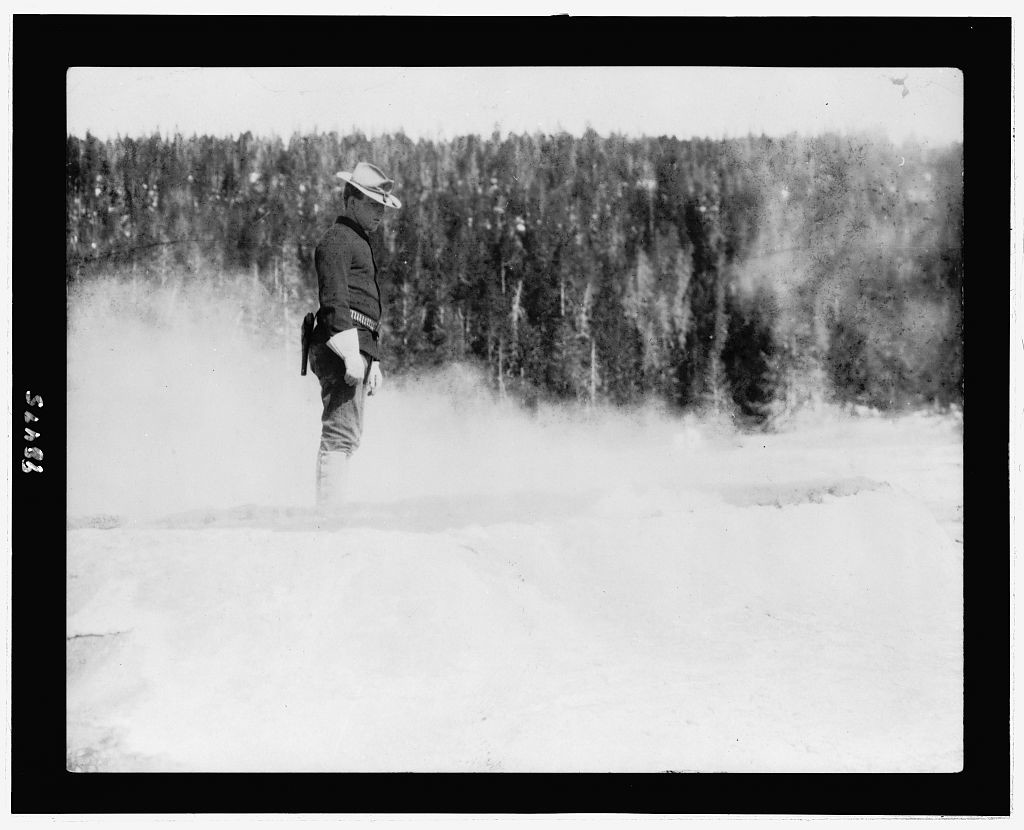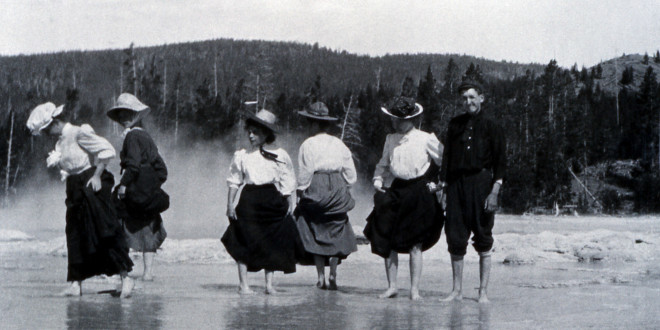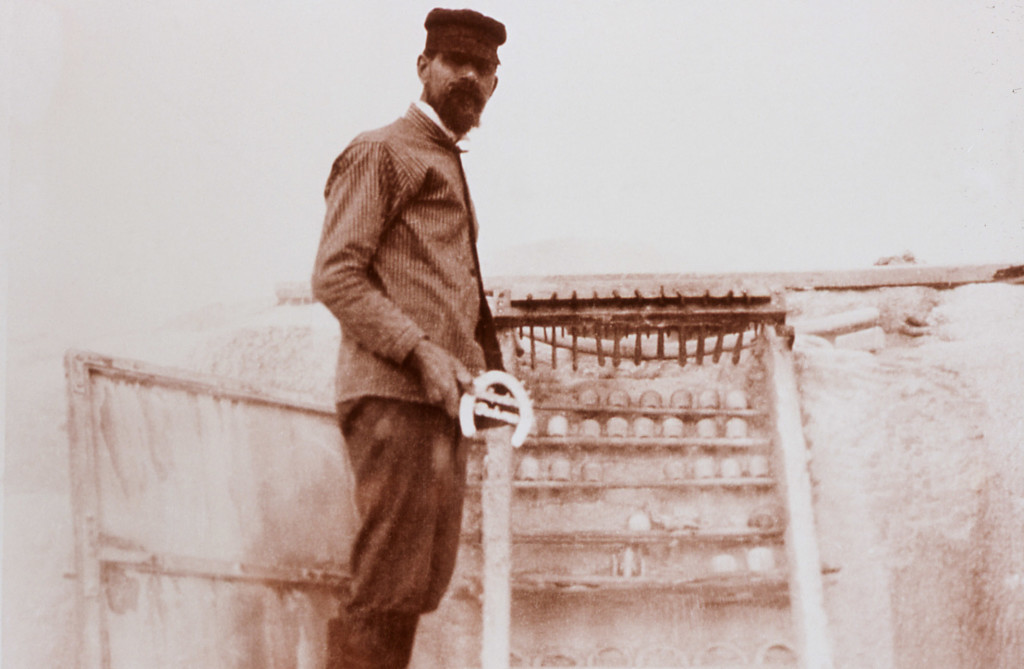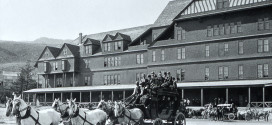Yellowstone National Park and tourism go hand-in-hand, for better or for worse.
Certainly, early in the Park’s history, it went for worse. Depending on how you look at it.
Imagine visiting Yellowstone’s geyser basins today. You amble along the boardwalks, snapping photos, admiring the geysers at play or the pretty colors of the hot springs. Signs abound warning visitors of the inherent dangers of stepping off the boardwalk. Any why would you want to? There’s no earthly reason to go tromping around on geyserite, putting yourself and/or a formation at risk.
Not so in the 1880s, ’90s, even the start of the 20th century. Back then there were no boardwalks, designated paths or safety warnings. You could clamber all over the Mammoth Hot Springs terraces or walk across Great Fountain Geyser without impunity. And it was common practice to make souvenirs—more often than not, by chipping off a piece of geyser and carrying it out with you.
Or, you could make travertine trinkets, like the ones shown above. It was a remarkably popular practice, as William O. Owen wrote in his 1883 essay on cycling through Yellowstone:
A peculiar property of the water in these springs is worthy of mention. It contains large quantities of silica in solution, and if any article, such as a bottle, piece of wood, an old shoe or the like be inserted therein and allowed to remain from twenty-four to forty-eight hours, it will receive a hard, white coating that is not easily removed.
Horseshoes, bottles and picture frames are the articles most frequently placed in the springs by tourists, and after withdrawing them they are suspended on a rack to dry.
If people didn’t want to take home a piece of Yellowstone, but wanted to show they’d been, they tried another tactic: writing in pools and on geyser cones. It was a serious problem. In fact, when the Army assumed protection of Yellowstone, they had a troublesome time keeping up with vandalism at first, according to Charles Dudley Warner:
When Captain Anderson took command the most beautiful “formations” were defaced by names written or scratched over them. He set his soldiers to chiseling and rubbing out these offensive names and inscriptions. Only in this way could the guardians see if new names were added.
The practice was provocative, especially among out-and-out admirers of Yellowstone’s “wilder” qualities, who were just as appalled at the numerous instances of poaching in the Park’s early history. Among the most prominent (and hilarious) dissents was written by Owen Wister in 1936, in reminiscence of the “Old Yellowstone Days” before 1916:
Why will people scrawl their silly names on the scenery? Why thus disclose to thousands of who will read this evidence that you are a thoughtless ass? All very well if you wrote your name, your address, and the date on the North Pole; but why do it in some wholly accessible spot where your presence represents no daring, no endurance, nothing but the necessary cash to go there?
Vandalizing geysers drew similar reproach from Western artist Frederic Remington (and, interestingly, a friend of Wister’s after a chance meeting in Yellowstone), who had stern words for anyone who tried to desecrate the Park:
Let us respect her moods, and let the beasts she nurtures in her bosom live, and when the man from Oshkosh writes his name with a blue pencil on her sacred face, let him spend six months where the scenery is circumscribed and entirely artificial.

Of course, the practice sharply dropped off once the Army (such as the cavalrymen standing guard at Midway Geyser Basin, shown above) started enforcing a “hands-off” (and “feet-off”) policy when it came to Yellowstone’s thermal treasures. Later, of course, the National Park Service started codifying proper Park etiquette. And while we’re sure the temptation is still present, Yellowstone is in much better shape when visitors put ample distance between themselves and the thermal features.
So to anyone who wants a souvenir from Yellowstone, we say: go to the gift shop. Or take a picture. Leave the cones and pools and terraces alone.
 Yellowstone Insider Your Complete Guide to America's First National Park
Yellowstone Insider Your Complete Guide to America's First National Park







You must be logged in to post a comment.